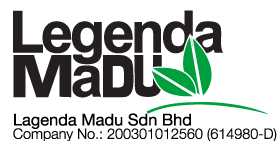Origins of Modern Composting
- Published in
- Written by Administrator
- Category: General Articles
- Hits: 6236
- Print , Email
Nature's Way, Plus a Helping Hand
Left to itself, composting is a process as old as time itself. In a nutshell, it’s nature’s way of returning to the earth what has come from the earth; a process whereby organic matter is broken down into its elements and reintroduced to the cycle of life as an energy-giving source. Nothing in nature is really wasted; dead leaves, rotting fruits, twigs and branches that litter the forest floor provide cover for the soil. As they decompose, they turn into carbon and nitrogen-rich compost that provide nourishment for existing and new plant life.
Observing nature, it didn’t take long for farmers to figure this out and deliberately add decomposed vegetation and manure to their plots. Farmers in the Akkadian Empire in 2300 BC did this, so did the ancient Roman, Greek and Chinese civilisations. In China, farmers laid their crop wastes on roads to be crushed by passing carts into broken down muck. These were then collected, mixed with human and animal manure and reapplied to farm soil. In New England in the 19th century, adventurous composting methods included layering marsh mud and fish. Not very nice smelling but definitely innovative and effective!
While ancient farmers were convinced of the efficacy of composting, it wasn’t until the early part of the 20th century that composting achieved recognition as a science. While there have been many that have contributed to the understanding and development of this science, one deserves special mention : the acknowledged founder of modern organic farming.
Origins of Modern Organic Farming
Sir Albert Howard (1873 – 1947) was an agricultural botanist by profession. He was employed by the colonial British government in India as an agricultural advisor. During his 25 years there, he observed and studied traditional farming methods. He was fascinated by the careful economy of the farm and respect shown towards the ecology of the land.
Howard became convinced that organic farming was the only way to agricultural sustainability; a cycle he had observed in nature. In his words: “Nature is the supreme farmer and gardener, and the study of her ways will provide us with the one thing we need – sound and reliable direction.” This sparked his interest in composting. Using a systematic and scientific approach, he went on to document and develop what he perceived as sustainable organic farming methods.
In 1940, Oxford University Press published An Agricultural Testament, Howard’s first book on organic farming specifically aimed at the general public. (Previously, in 1931, he had co-authored a scientific publication titled The Waste Products Of Agriculture: Their Utilisation As Humus.) It has since become the classic text book for understanding the essence of organic farming.
In it, Howard championed the importance of organic composting and its benefits over chemical fertilisers. He explained that the health of the soil, crops and farm animals were related and deduced that farming methods which took into account the inter-relationships of the three was the key to sustainability. He reasoned that “the maintenance of the fertility of the soil is the first condition of any permanent system of agriculture.”
Howard concluded that compost was the most effective way of returning nutrients to the soil as it was a natural process within a plant’s life cycle. As he put it: “The wheel of life is made up of two processes, growth and decay, and one is the counterpart of the other.”
While Director of the Institute of Plant Industry at Indore, he experimented with various methods of decomposing agriculture waste. These experiments included changing the ratio of organic ‘ingredients’ (plant and manure) in the mix, layering to allow the decomposing organic matter to ‘breathe’, studying the appropriate density of these composting heaps and optimum time for this mixture to mature and become nutrient-rich compost or humus. His results gave birth to the Indore Method which is still practised today.
His results proved that if the soil was healthy and suitable to the type of plant found growing on it, the plant and animals living on that soil would flourish. If the soil was unsuitable, the plants and animals would suffer from poor nutrition and pests. By using compost to ‘correct’ the soil, crops and livestock eventually became healthier and pest-resilient.
A forward-looking man, Howard further passed on his knowledge of composting through notable works such as Farming And Gardening For Health Or Disease (1945) and Soil And Health: A Study Of Organic Agriculture (1947). He also propagated his ideas through the Soil Association. Set up in 1946, this organisation comprised of farmers, scientists and nutritionists who acknowledged the relationship between farming practices, plant, animal and environmental health. Their work has inspired the establishment of and collaboration with eminent institutions such as the Rodale Institute in the US. These organisations continue today, and have become authorities in the setting of standards and practices in organic farming.


